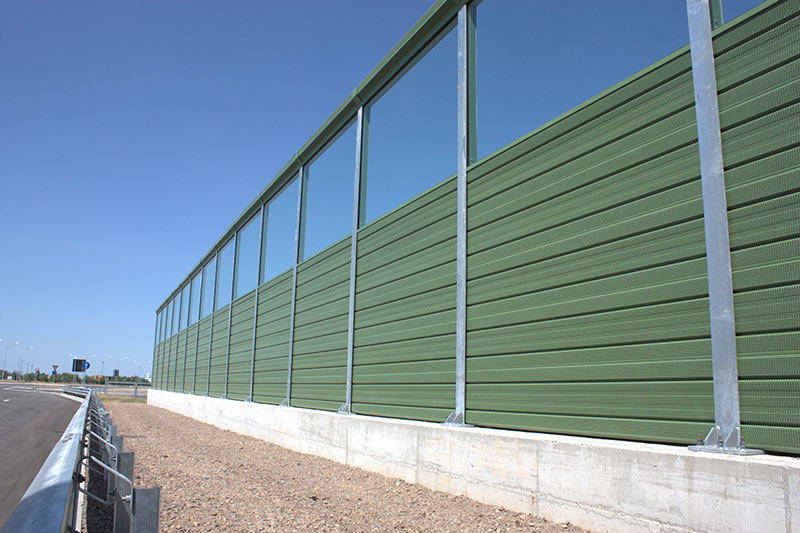Tips When Using a Portable Noise Barrier

Noise pollution can be a constant issue in various industries that requires precision, concentration and efficiency. Often, even the smallest amount of noise can disturb work processes, making it difficult for workers to concentrate and complete their job efficiently.
To counteract the negative impact of noise pollution, portable noise barriers are being widely used in many industries as they help reduce the impact of unwanted sound levels. A portable noise barrier is a great alternative to permanent soundproofing, as it enables you to manage the noise in your workspace without incurring significant renovation costs.
While there are many different types of portable noise barriers available, it is imperative to use them correctly to achieve the desired results. As such, we have compiled a list of tips that will help you get the most out of your portable noise barrier. These tips will not only help you reduce noise in your workspace, but will also help you maintain the barrier and make it last longer.
Ensure proper placement and installation of the portable noise barrier.
When using a portable noise barrier, proper placement and installation are critical to its effectiveness in reducing noise levels. Not only should the barrier be positioned as close to the source of the noise as possible, but it should also be placed in a way that ensures it completely encloses the noise source. It is important to consider the shape and size of the barrier and the shape of the area in which it will be placed to ensure full coverage.
Use the appropriate size and type of barrier for the noise level and source.
When using a portable noise barrier, it is important to consider the noise level and source. One tip to keep in mind is to use the appropriate size and type of barrier for the specific situation. This means taking into account the frequency, amplitude and duration of the noise.
Different barriers have different thicknesses and materials that are optimized for specific noise levels and frequencies, so it is important to consider these factors when selecting the appropriate barrier. If the barrier is too small, it may not effectively block out the noise, while a barrier that is too large may be heavy and difficult to manage.
Regularly inspect and maintain the barrier to ensure it is functioning properly.
When using a portable noise barrier, it is important to ensure that it is set up and functioning properly to effectively reduce noise levels. One important tip is to regularly inspect and maintain the barrier to ensure it is functioning properly. This includes checking for any damage to the barrier or its attachments, as well as ensuring that the barrier is properly anchored and in place.
Consider the impact of wind and weather conditions on the barrier’s effectiveness.
When using a portable noise barrier, it is crucial to consider the impact of wind and weather conditions on its effectiveness. Wind can significantly affect the barrier’s ability to absorb or deflect sound, and adverse weather conditions such as rain or snow can reduce its performance.
To ensure optimal performance, it is essential to position the barrier correctly and anchor it securely to prevent it from vibrating or shifting, which can cause weak spots in the noise barrier.
Use in combination with other noise reduction measures for maximum results.
When using a portable noise barrier, it is recommended to use multiple techniques to achieve maximum noise reduction results. Portable noise barriers can effectively reduce the noise levels, but they work better in combination with other noise reduction measures.
Using a portable noise barrier along with earplugs or earmuffs can provide an extra layer of protection for an individual working near loud machinery or equipment. Therefore, using a portable noise barrier in combination with other measures can help minimize the noise levels in your environment and ensure your health and safety.


 How Consultant’s Guide to HIPAA Compliance Audits and Assessments
How Consultant’s Guide to HIPAA Compliance Audits and Assessments  5 Strategies for Integrating Underground Utilities with Railroad Design You Need To Know
5 Strategies for Integrating Underground Utilities with Railroad Design You Need To Know  Key Solutions to Look for in Business Analytics for 2024
Key Solutions to Look for in Business Analytics for 2024  Vital Reasons that Enable Hoarding Signage to Set your Business Apart
Vital Reasons that Enable Hoarding Signage to Set your Business Apart  Customised Facilities Management Solutions: Tailoring Services to Meet Industry-Specific Needs
Customised Facilities Management Solutions: Tailoring Services to Meet Industry-Specific Needs  Professional photography company helps in marketing
Professional photography company helps in marketing  Top Training Courses to Boost Employee Performance in Australia
Top Training Courses to Boost Employee Performance in Australia